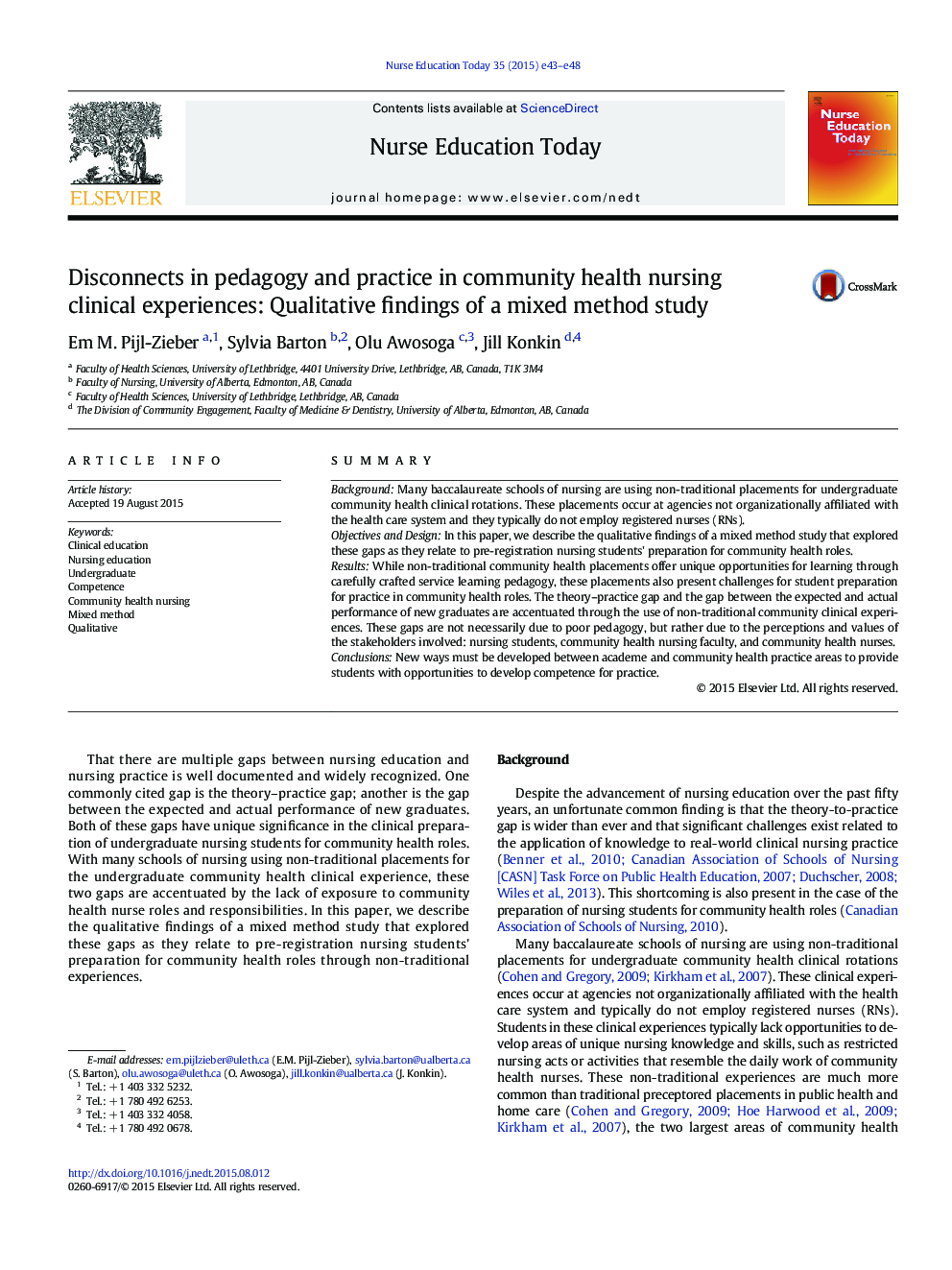| Article ID | Journal | Published Year | Pages | File Type |
|---|---|---|---|---|
| 368111 | Nurse Education Today | 2015 | 6 Pages |
•Undergraduate nursing students are not prepared for community health.•Non-traditional clinical experiences may not foster nursing competence.•Nurses, students, and faculty have different perspectives on readiness for practice.•The theory–practice gap is widening, especially in community health.
SummaryBackgroundMany baccalaureate schools of nursing are using non-traditional placements for undergraduate community health clinical rotations. These placements occur at agencies not organizationally affiliated with the health care system and they typically do not employ registered nurses (RNs).Objectives and DesignIn this paper, we describe the qualitative findings of a mixed method study that explored these gaps as they relate to pre-registration nursing students' preparation for community health roles.ResultsWhile non-traditional community health placements offer unique opportunities for learning through carefully crafted service learning pedagogy, these placements also present challenges for student preparation for practice in community health roles. The theory–practice gap and the gap between the expected and actual performance of new graduates are accentuated through the use of non-traditional community clinical experiences. These gaps are not necessarily due to poor pedagogy, but rather due to the perceptions and values of the stakeholders involved: nursing students, community health nursing faculty, and community health nurses.ConclusionsNew ways must be developed between academe and community health practice areas to provide students with opportunities to develop competence for practice.
